Composite Bonding
Composite bonding, or dental bonding, is a cosmetic dental treatment that uses tooth-colored resin to repair and improve the appearance of teeth. It effectively addresses issues such as chips, cracks, stains, and misshapen teeth quickly and cost-effectively, often in one visit.
This treatment focuses on minor imperfections in individual teeth, while composite veneers require more extensive reshaping. Bonding is ideal for perfecting tooth edges and involves applying and sculpting the resin on the tooth’s surface. The material is then hardened with a special curing light to achieve the desired shape and size.
Benefits of Dental Bonding
Composite edge bonding can be used to address a variety of cosmetic dental issues, including:
- Repairing chips or cracks in teeth
- Reshaping misshapen or uneven teeth
- Closing gaps between teeth
- Improving the appearance of discoloured or stained teeth
- Protecting exposed tooth roots
- Making teeth appear longer or more proportional
While composite edge bonding is relatively quick and easy, it is not as long-lasting as other cosmetic dental treatments, such as ceramic veneers, bridges or dental crowns.
The composite material may need to be replaced every 5 to 10 years, and patients may need to avoid certain foods and drinks that can stain the fabric.
It’s essential to consult with a qualified cosmetic dentist to determine if dental bonding is the proper treatment for your individual needs and goals.
What is the difference?
Composite Edge Bonding vs Composite Veneers
Composite bonding and composite veneers are both cosmetic dental procedures that use composite resin material to improve the appearance of teeth.
Both treatments are versatile and can address issues like tooth discolouration, chipped or cracked teeth, gaps between teeth, and minor misalignment.
The choice between composite bonding and composite veneers depends on the individual’s specific needs and desired outcomes, which can be determined through a consultation with an Amazing Smiles cosmetic edge bonding dentist.
However, there are some differences between the two:
Cosmetic Edge Bonding
Composite bonding effectively closes gaps between teeth and can increase the width and length of short teeth, improving your smile. It also helps with the effects of tooth grinding (bruxism) and smooths sharp edges. A night guard is recommended to protect the bonded areas.
This procedure is ideal as a finishing touch after orthodontic or cosmetic treatments, correcting minor imperfections with minimal tooth preparation. Unlike composite veneers, which cover more of the tooth, edge bonding is focused and non-invasive. It’s also a cost-effective option for repairing minor chips and gaps while maintaining a natural look.
Composite Veneers
Composite veneers, on the other hand, are designed to cover more surface area of the tooth. As a result, they provide a more significant transformation and can cover a broader range of aesthetic concerns. If you have teeth that are extensively chipped or fractured, composite veneers offer an excellent solution. Composite veneers are a fantastic option for addressing discolouration on the surfaces of your teeth.
Composite veneers, when selected in a lighter shade, can effectively whiten teeth. They provide an excellent alternative for those seeking a more conservative solution than porcelain veneers. Composite veneers can also effectively enhance the volume of teeth, providing a fuller and more balanced smile.
In summary, dental bonding is quicker and more affordable for repairing minor cosmetic issues with teeth.
In contrast, composite veneers are a more comprehensive and long-lasting solution for correcting more severe cosmetic problems.
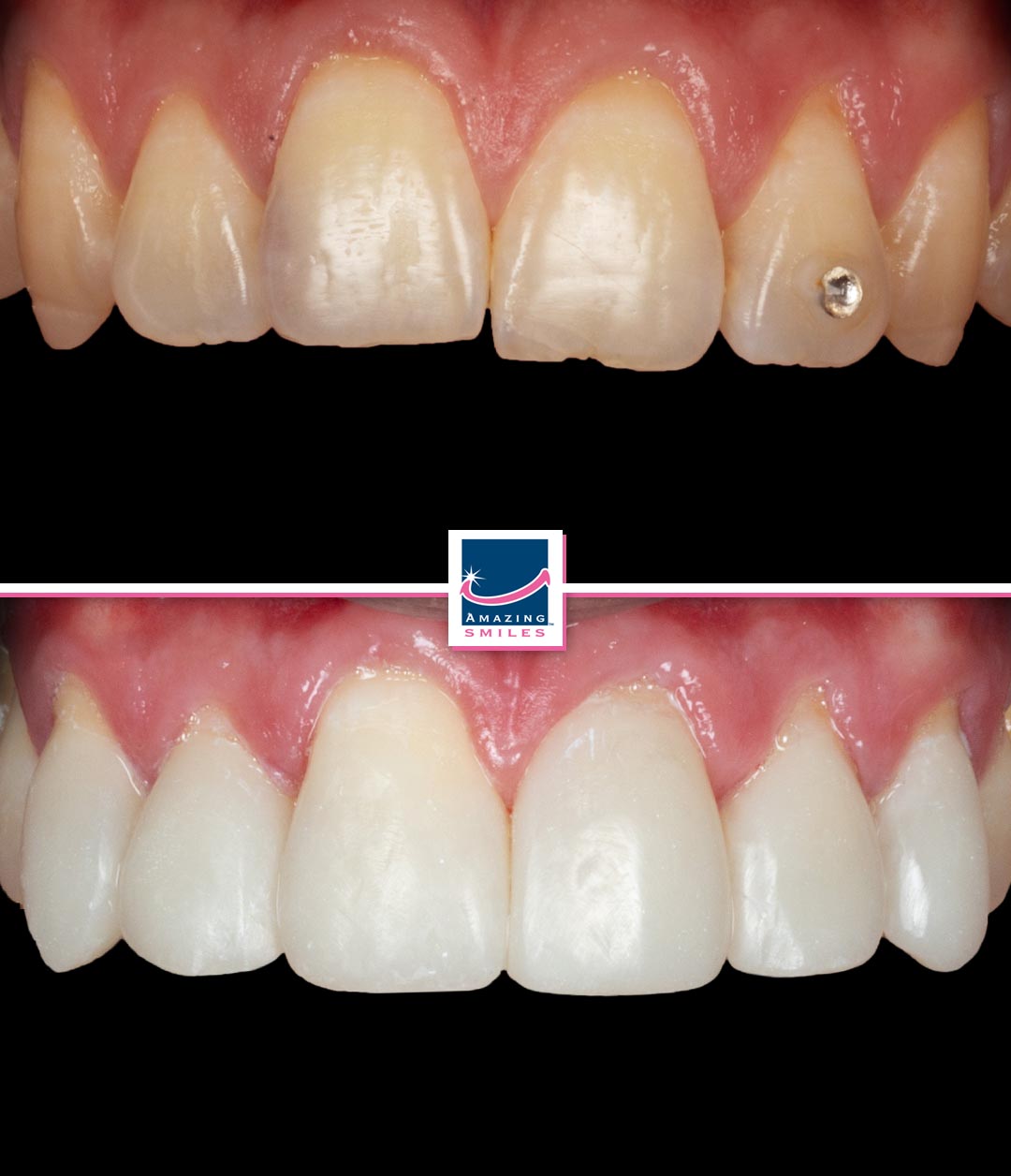
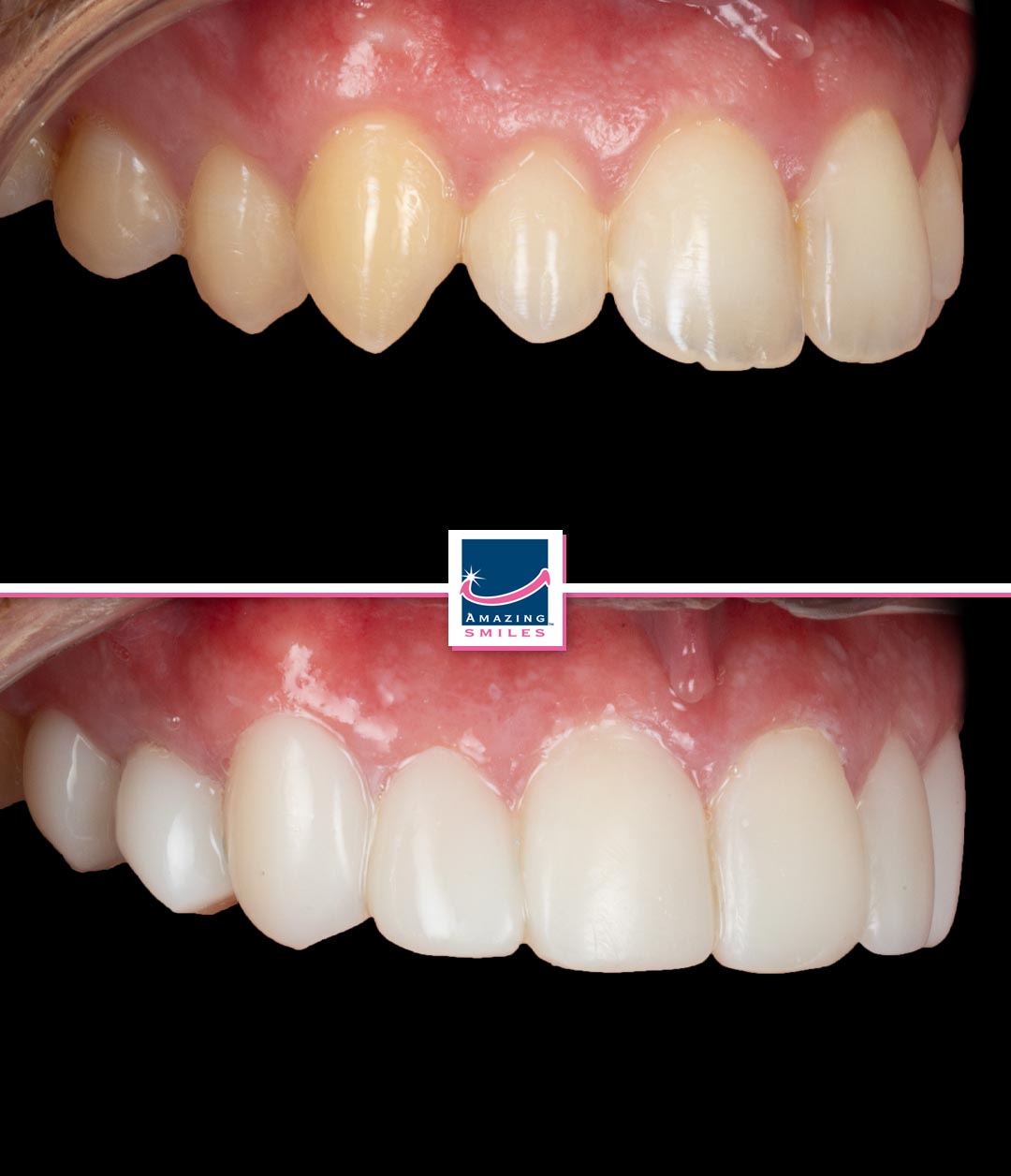
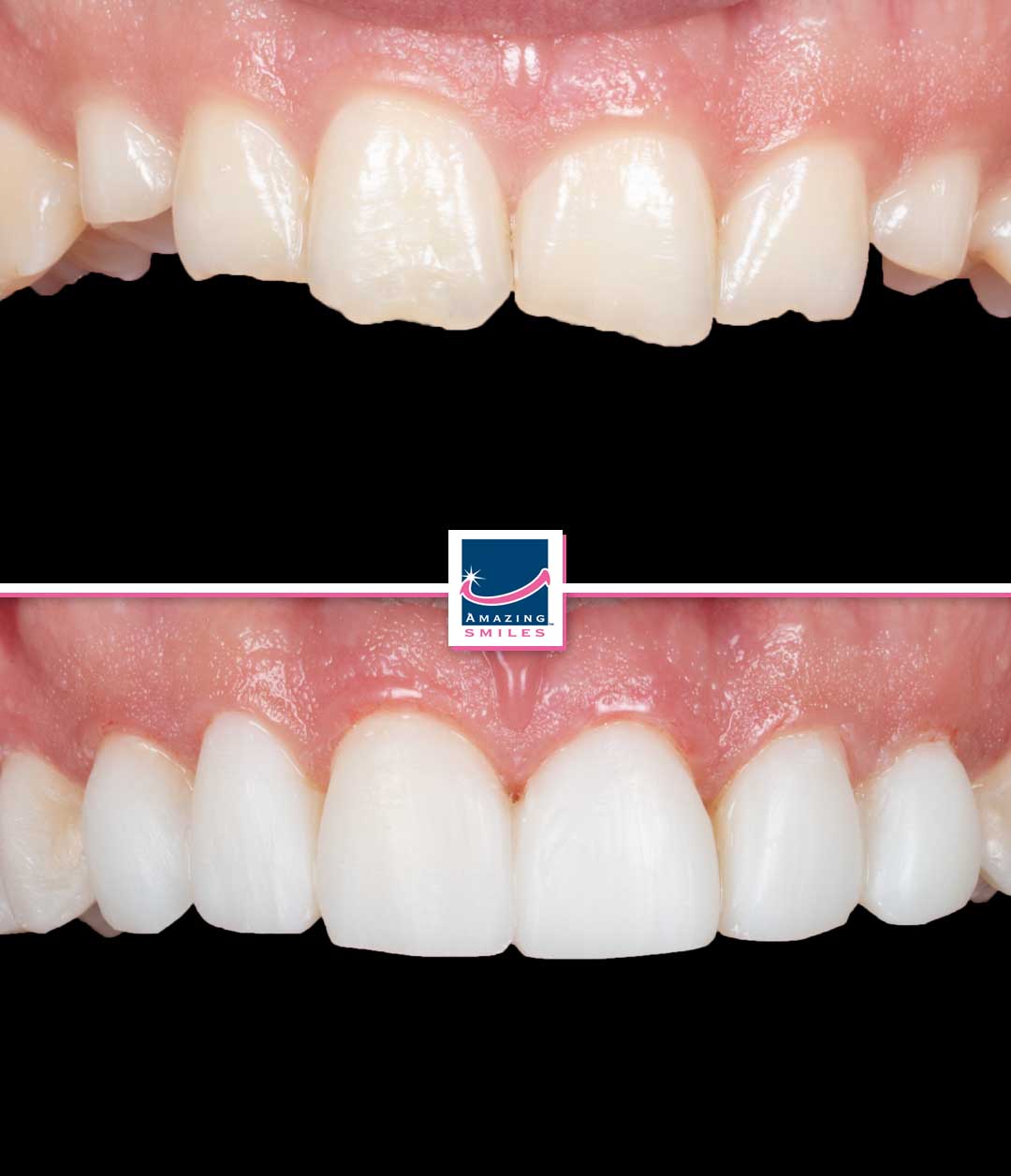

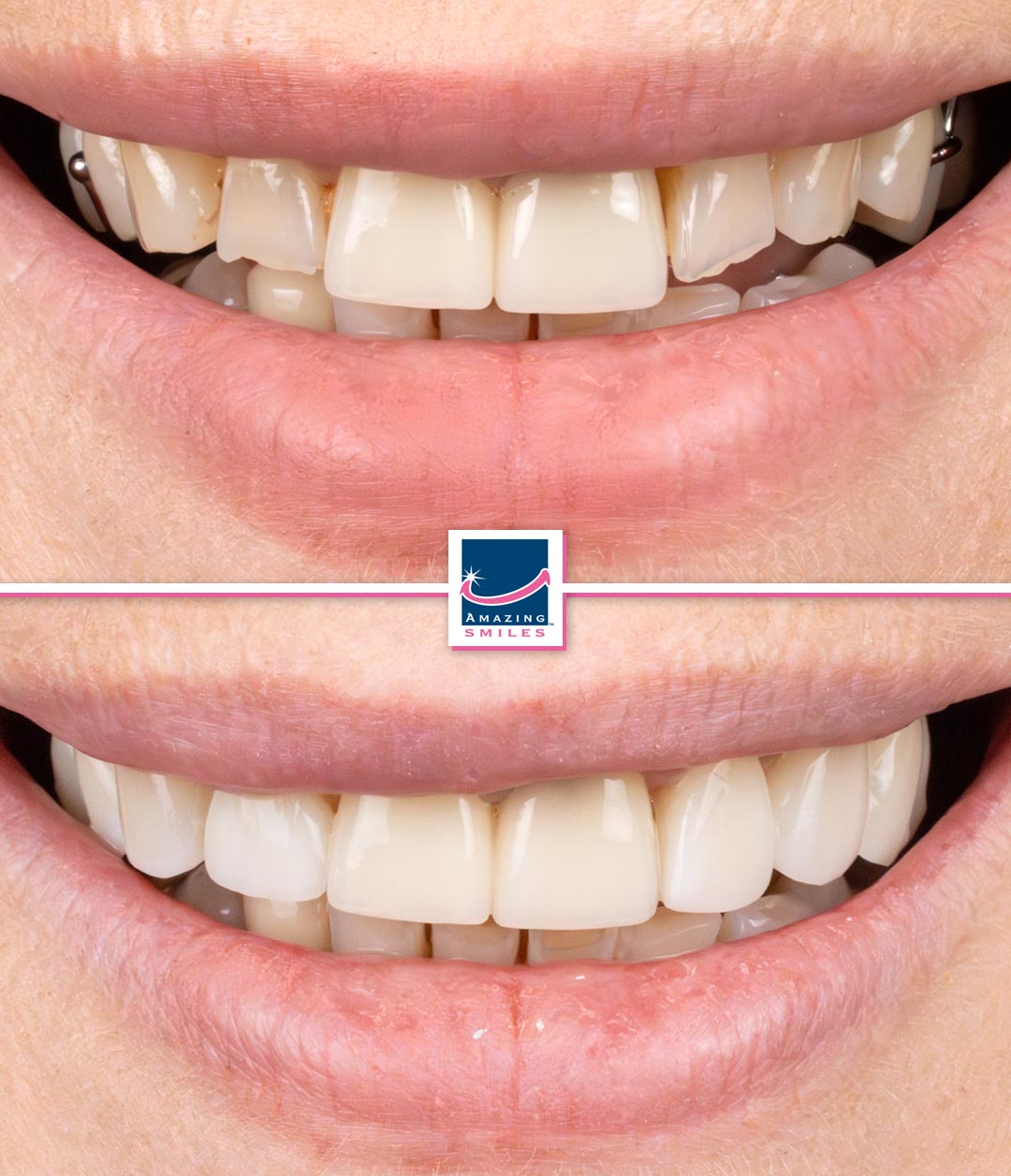
Composite Bonding Payment Plans
No interest payment plans are available with Zip, Afterpay, Humm. Payments can be scaled weekly to suite your financial position. Eligibility is determined and confirmed with the provider.
Why Choose Us For Dental Bonding?
When it comes to dental bonding, Amazing Smiles stands out for a multitude of reasons. Firstly, our cosmetic dentists are not just professionals but are enthusiasts who are deeply passionate about their craft and the industry.
Their dedication is mirrored in the quality of their work, ensuring that the end result – your smile – is nothing short of perfection.
Spanning across South East Queensland, with presence in Gold Coast, Jimboomba, Logan, Bray Park, and Wynnum, our five clinics are all preferred providers. This designation guarantees that you maximize the advantages from your private health coverage when you choose our services.
Moreover, understanding the varied financial situations of our valued patients, we proudly offer $0 interest payment plans. This ensures that monetary concerns don’t stand between you and your radiant smile.
At Amazing Smiles, our objective is simple: to make you smile, wider and brighter. Contact us to find out more.
Composite Bonding Risks and Recovery
Composite bonding is a popular and minimally invasive cosmetic dental treatment used to repair chips, close small gaps, and improve the shape or colour of teeth. The procedure involves applying a tooth-coloured resin material that is carefully shaped and polished to blend naturally with your smile. While composite bonding is considered safe and straightforward, there are still some risks and recovery factors to be aware of.
Potential Risks and Considerations
- Chipping or wear: The bonding material is durable but not as strong as natural enamel. Biting hard foods, grinding, or nail-biting can cause damage over time.
- Staining or discolouration: Composite resin can absorb stains from coffee, tea, red wine, or tobacco more easily than porcelain alternatives.
- Longevity: Results generally last 3–8 years, depending on lifestyle habits, bite pressure, and maintenance.
- Touch-ups or replacement: Minor repairs or polishing may be needed over time to keep the bonding looking its best.
- Sensitivity: Some patients experience mild tooth sensitivity after the procedure, which usually subsides within a few days.
Recovery and Aftercare
- One advantage of composite bonding is that it requires no downtime. You can return to normal activities right after your appointment. To maintain your results:
- Avoid biting into tough foods (like ice or nuts) with bonded teeth.
- Brush and floss daily, and visit your dentist for regular check-ups and cleans.
- Minimise staining by rinsing after consuming dark-coloured drinks.
- If you grind your teeth, your dentist may recommend a night guard to protect the bonding.
When properly cared for, composite bonding can offer natural-looking, long-lasting improvements to your smile, often completed in just one visit.

Composite Bonding FAQ's
How much does dental bonding cost?
Costs can vary depending on the individual requirements of the patient. On average, composite edge bonding may cost $400-$500 per tooth. Prices differ based on the complexity of each person’s unique needs.
How long does composite bonding last?
The longevity of composite bonding varies between individuals. With good oral hygiene, a balanced diet, and regular dental check-ups, composite bonding can often last several years (on average 4-7 years) before needing maintenance or replacement. However, habits such as teeth grinding, nail biting, or using teeth to open objects may shorten its lifespan. Your dentist can provide personalised advice based on your oral health and lifestyle.
Does private health insurance cover cosmetic bonding?
Most health insurance plans offer basic dental coverage for cleanings, exams, fillings, and preventive procedures, but typically do not cover composite bonding. Some providers may cover it if needed for deep decay or severe cracks. It’s best to check with your insurance to confirm coverage. If you have questions about your plan or recommendations for composite bonding, our team is here to help.
Does teeth whitening work on composite bonding?
Teeth whitening works on natural tooth enamel but not on composite bonding, which is non-porous. If you have composite bonding and want a whiter smile, consult your dentist for options. They may replace the bonding with a lighter shade or suggest alternatives like veneers or crowns.
Can composite edge bonding break?
Cosmetic composite bonding can chip or break under excessive force, though it’s durable for normal biting and chewing. Activities like biting hard objects, using teeth as tools, or grinding increase the risk of damage, and poor oral hygiene can weaken the bonding. If it breaks, consult your dentist for evaluation and possible repair or replacement. To prevent damage, avoid stressing the bonding and maintain good oral hygiene.
Does composite bonding stain or discolour?
Composite bonding can stain from foods and drinks like coffee, tea, red wine, and tobacco use. While it resists staining, it’s not immune. Practice proper care and regular dental cleanings to keep it looking good. If you notice discolouration, consult your dentist. If the discolouration is severe, they may recommend professional whitening or replacing the bonding. Avoid abrasive toothpaste or harsh whitening products, as they can damage the bonding and lead to more staining.
Is dental bonding reversible?
Dental bonding is a reversible procedure where composite material is applied to the tooth to improve appearance or repair damage. It can be removed or replaced with minimal harm to the tooth, although some reshaping or polishing may be needed. Consult a dental professional for personalized advice and options.
Do you provide a warranty for composite bonding?
No, we don’t provide a warranty for composite bonding. As we can’t monitor patients’ oral hygiene practices, diet, or how regularly they visit their dentists, our dentists cannot guarantee the longevity of composite bonding treatments.
The lifespan of composite bonding can vary between individuals and depends on factors such as oral care habits, diet, and regular professional maintenance. Good oral hygiene and attending routine dental check-ups can help support the appearance and durability of bonding.
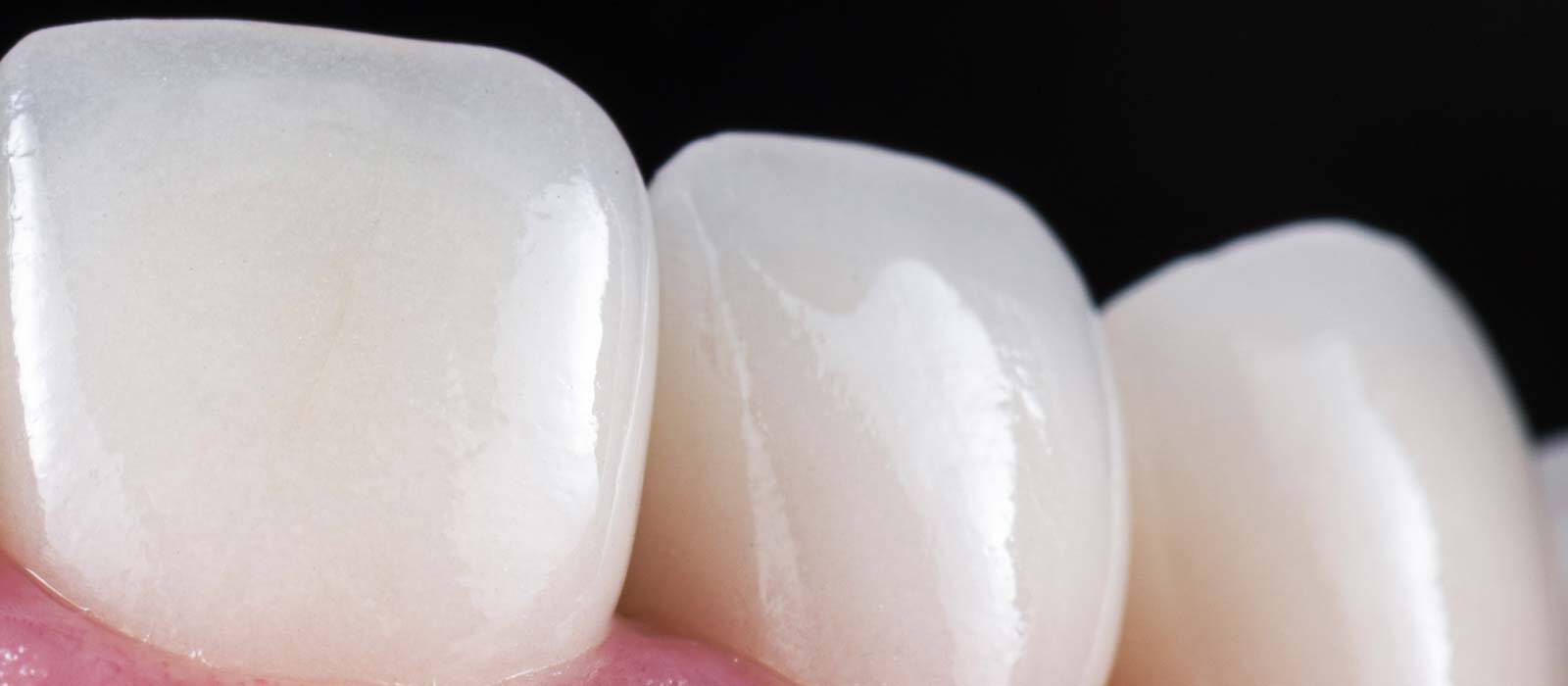
We accept all major health funds

Make an Enquiry
We are proud to be preferred providers with most major health funds, allowing our patients to maximise their health cover benefits and access quality care at greater value. To make treatment more accessible, we also offer a variety of flexible payment plans, helping individuals manage the cost of their dental care in a way that best suits their financial situation.
Start your journey toward a healthier, more confident smile by booking your complimentary smile consultation with Amazing Smiles today.

